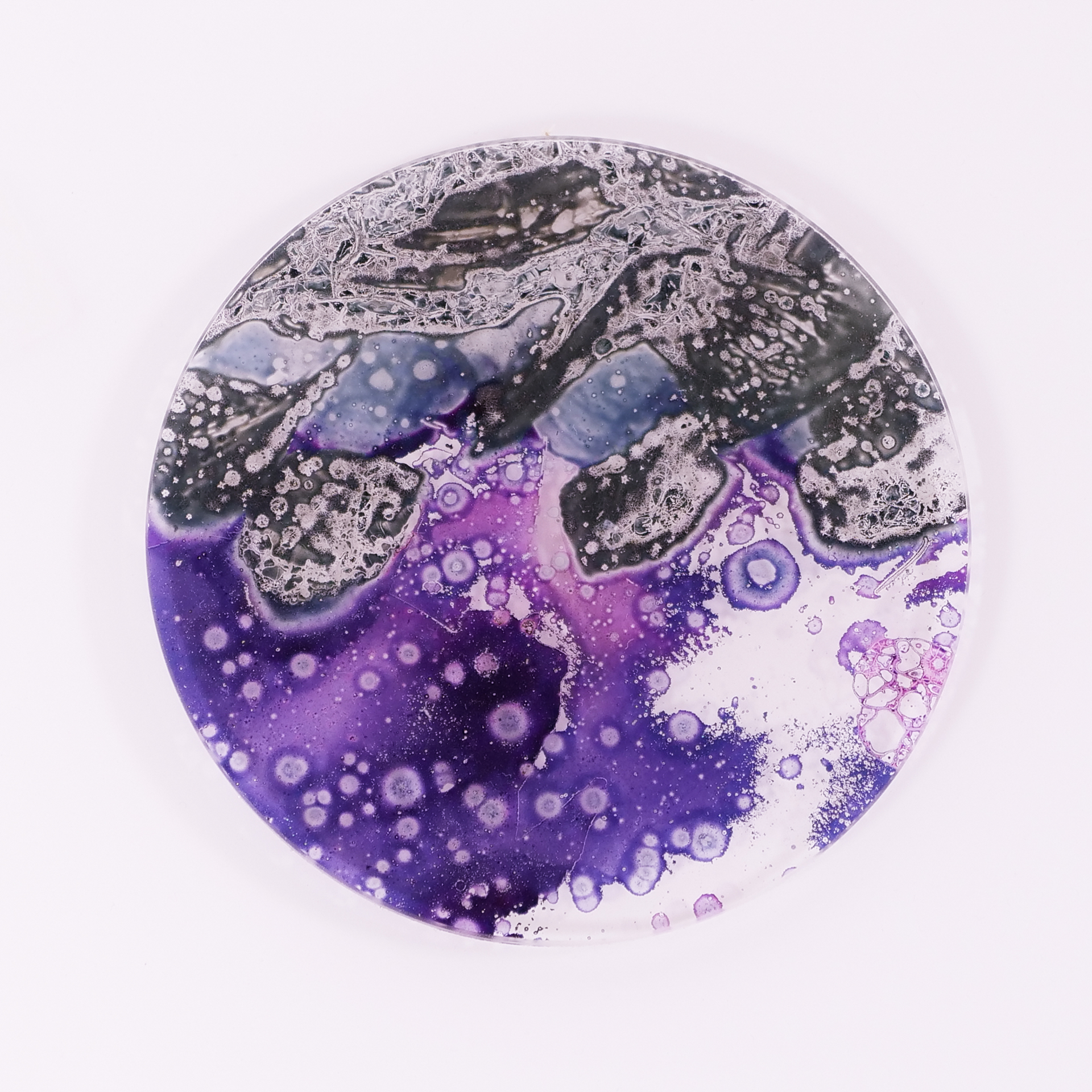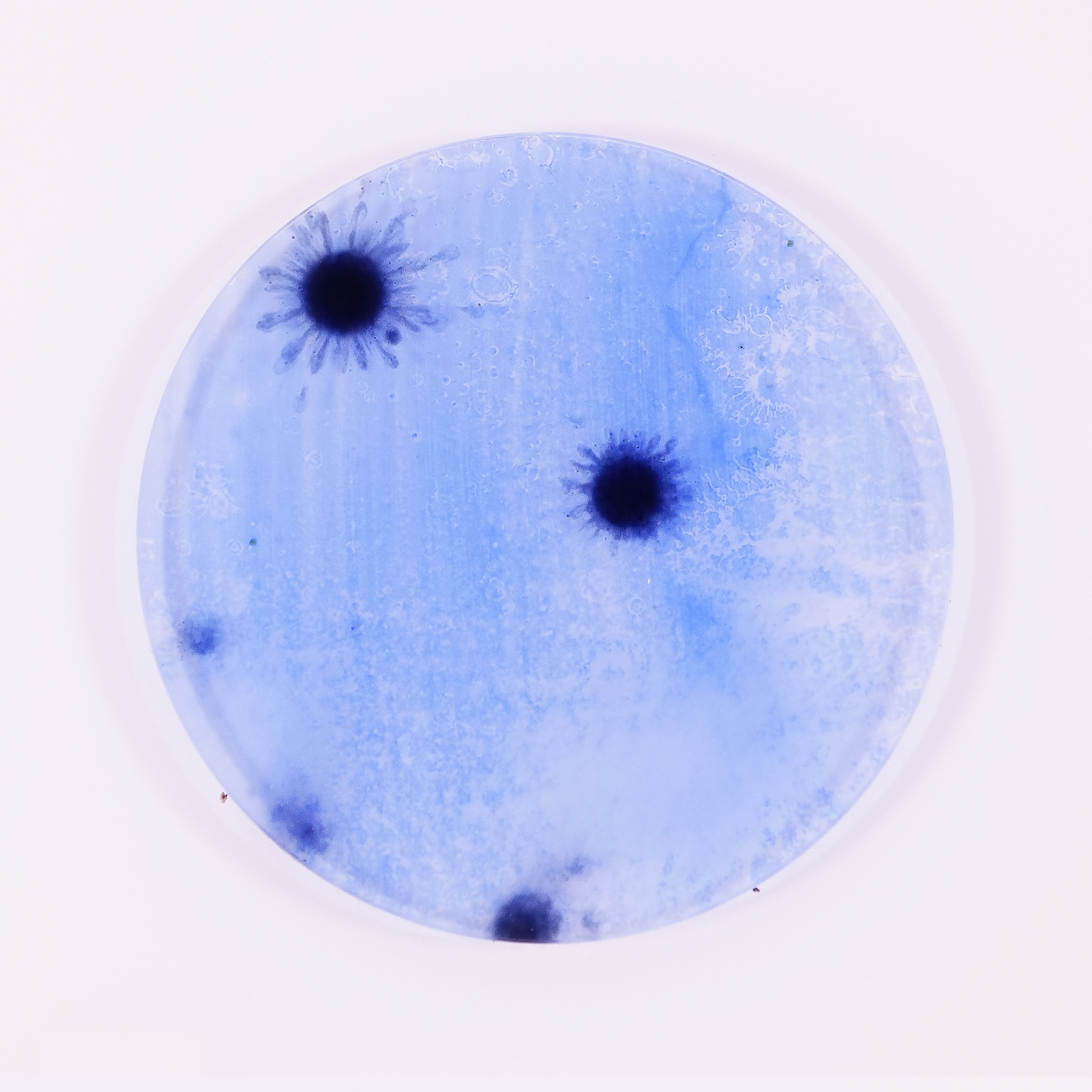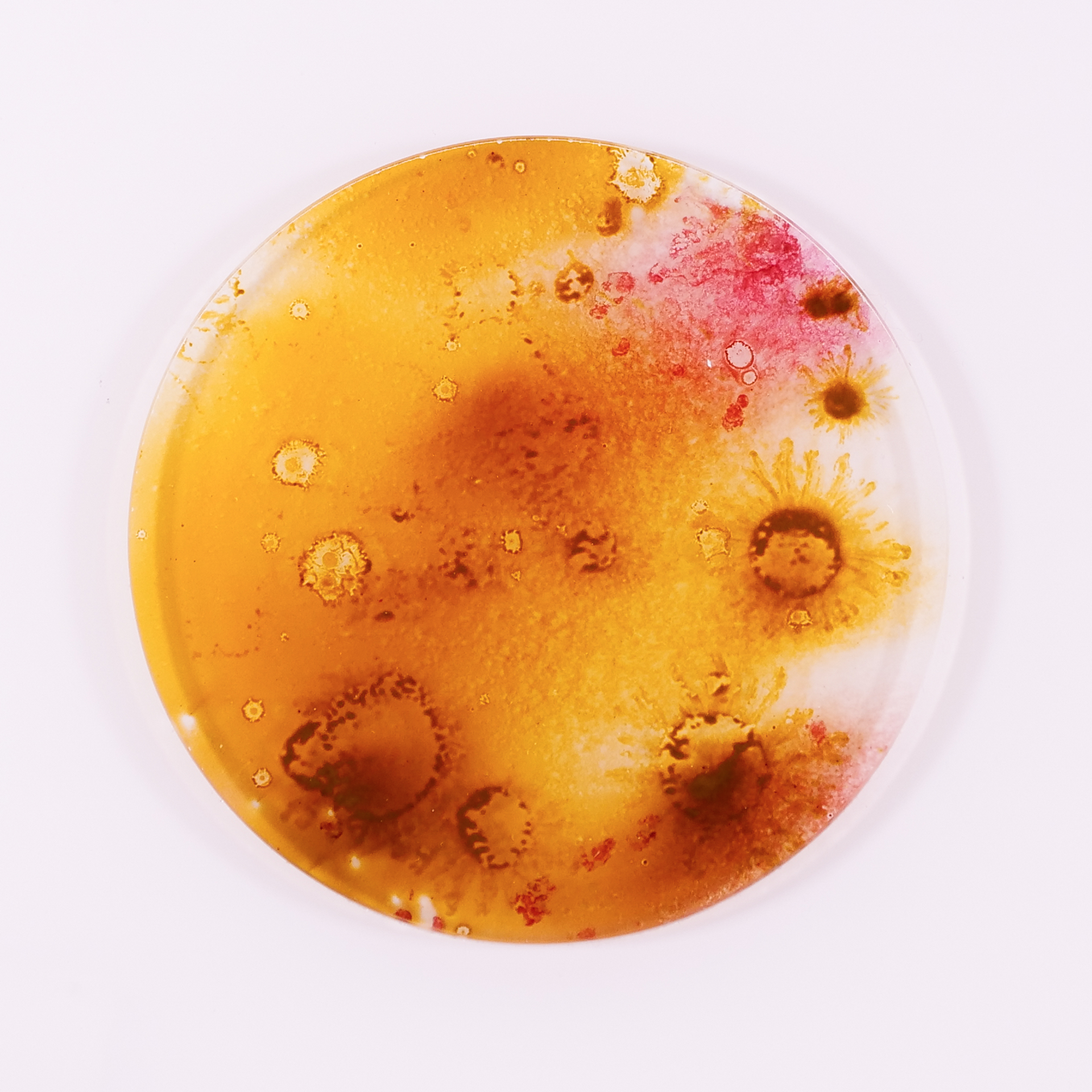Sometimes miracles happen by accident. In 1928, the Scottish bacteriologist Alexander Fleming (1881–1955), just returned to his laboratory from his summer vacation, found a Petri dish with a moldy bacterial culture: A tiny amount of green mold had destroyed the bacteria. He managed to extract the bactericidal substance from the mold: penicillin. The apparent error turns out to be one of the greatest achievements in the history of medicine.
In the artwork »Bunte Reihe« we follow an analogous path: In glass painting, colors are mixed by combining different coloring substances with each other. However, the actual mixed color can only be seen after firing, when the materials have reacted with each other at high temperatures.
Achieving the desired result therefore requires a high level of experience. Nevertheless, there are always supposedly »failure« attempts, in which substances react with each other in a completely unexpected way. This happens above all in the search for new color spectrums, densities and structures for individual works.
The process and handling of the results when mixing new colors in glass painting is reminiscent, both formally and in terms of the procedure, of the test series used by doctors when they try to understand translational processes in humans and their environment or specifically to decode the code for fighting a disease.
The work is thus oriented as closely as possible to the everyday life of physicians, in order not only to set an aesthetic accent in the foyer, but also to maximally promote the identification of the visitors with the art
Created for Staatliches Bauamt Augsburg
Developed in cooperation with Felix Weinold and Mayer'sche Hofkunstanstalt




















